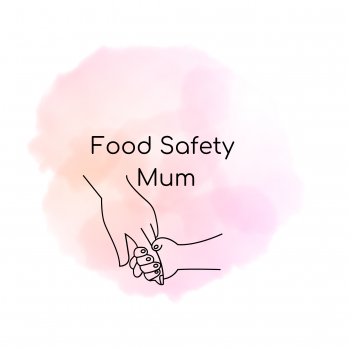What Are E-Numbers on our food labels and What Do They Tell Us?
Have you ever wondered what those mysterious "E-numbers" on food labels actually mean? Or why some ingredients sound unfamiliar, while others are followed by a number starting with "E"? With the increasing production of processed foods and the fast-paced lives we lead, it’s essential for food manufacturers to use food additives to enhance food quality, safety, and convenience. The E code signifies the European approval.
Let's dive into what these additives are and why they’re used.
What Are Food Additives?
Food additives are substances added to food products for specific technological purposes. According to legislation, these are substances—either with or without nutritional value—added intentionally during the production, processing, preparation, packaging, transport, or storage of food.
If an ingredient in our food has an E-number, it means that it has been evaluated and approved for use. Additives that are assigned an E-number are considered safe and permissible for consumption. However, some additives have quantity limits, while others can be used without restriction. The legislation categorizes products and specifies which additives are allowed in each category.
Categories of Food Additives
Each category of food additives serves a specific technological function. Below, we briefly explain the role of some basic food additive categories:
-
Preservatives: These help food maintain its shelf life by preventing spoilage from bacteria or mold.
-
Antioxidants: They protect food from oxidation, preventing unwanted changes and deterioration.
-
Colorants: These give food products a specific color, enhancing their visual appeal.
-
Sweeteners: They provide sweetness to food.
-
Emulsifiers: These break down fat molecules into smaller ones, improving the texture of the product.
-
Stabilizers: They help maintain the physical and chemical properties of a food product over time.
-
Gelling Agents: These create a gel-like consistency in foods, such as in jams or jelly.
-
Acidity Regulators: They modify or control the acidity or alkalinity of a food product.
-
Anti-foaming Agents: These prevent or reduce foam formation during food processing.
-
Flavor Enhancers: These boost the natural flavor or aroma of food products.
-
Leavening Agents: These help dough rise without significantly affecting its energy content.
In the ingredient list of a product, you will typically see the category of the additive followed by its specific name or E-number.
Are They Safe?
So, are food additives safe? This is a common question, and it’s important to understand the regulatory framework around these substances. The European Food Safety Authority (EFSA) plays a key role in evaluating the safety of food additives based on scientific evidence. If an additive is approved by EFSA, it is considered safe for human consumption within the established limits. However, some individuals may have sensitivities to specific additives, such as those who are allergic to certain colorants or preservatives.
For consumers with allergies or sensitivities, food labels are a vital resource. By reading the ingredient list carefully, individuals can avoid allergens or make informed choices based on their dietary preferences. For those who prefer foods with fewer additives, reading labels can also help identify products that meet their needs.
How to Make Informed Choices
Understanding what goes into our food is more important than ever. By reading food labels and staying informed about the additives used in your favorite products, you can make choices that align with your health goals and dietary needs. Whether you're concerned about allergens or looking for foods with fewer processed ingredients, it's within your control to make educated decisions.
While the presence of E-numbers on food labels indicates that additives have been approved for use, a product containing numerous E-numbers may signal a higher proportion of artificial ingredients. This is often the case with highly processed foods, which tend to rely on additives for preservation, flavor enhancement, or appearance. Although many of these additives are considered safe by regulatory authorities, it’s important to remember that the more additives a product contains, the more artificial it may be. Ultimately, the choice is yours: if you prefer to avoid artificial ingredients, checking the list of additives can help you decide which products align with your preferences and health goals.
By carefully examining the label of each food, we can make safe and informed choices based on our needs. It is in our hands!
Conclusion
Food additives are an essential part of the food industry, helping to preserve, enhance, and improve food products. While most additives are considered safe, it's crucial to be aware of your own dietary needs and sensitivities. By reading food labels and understanding the purpose of different additives, you can make safe, informed choices about what you consume.
References:
-
Regulation (EU) No. 1169/2011 on the provision of food information to consumers.
-
Regulation (EU) No. 1333/2008 concerning food additives.
-
General Chemical State Laboratory, Informational Leaflet "Permitted Food Additives (E Numbers)" (Edition February 21, 2019).
-
WHO, ‘Food Additives’ [retrieved 28/07/2021] https://www.who.int/news-room/fact-sheets/detail/food-additives
-
EUFIC, Food additives, https://www.eufic.org/en/whats-in-food/category/food-additives
-
EFSA (European Food Safety Authority) official website: https://www.efsa.europa.eu
-
EFET (Hellenic Food Authority) website: https://www.efet.gr
-
https://www.madeformums.com/baby/e-numbers-the-facts-you-need-to-know/

 English
English
 Ελληνικά
Ελληνικά Русский
Русский
 Posted by
Food Safety Mum
Posted by
Food Safety Mum






